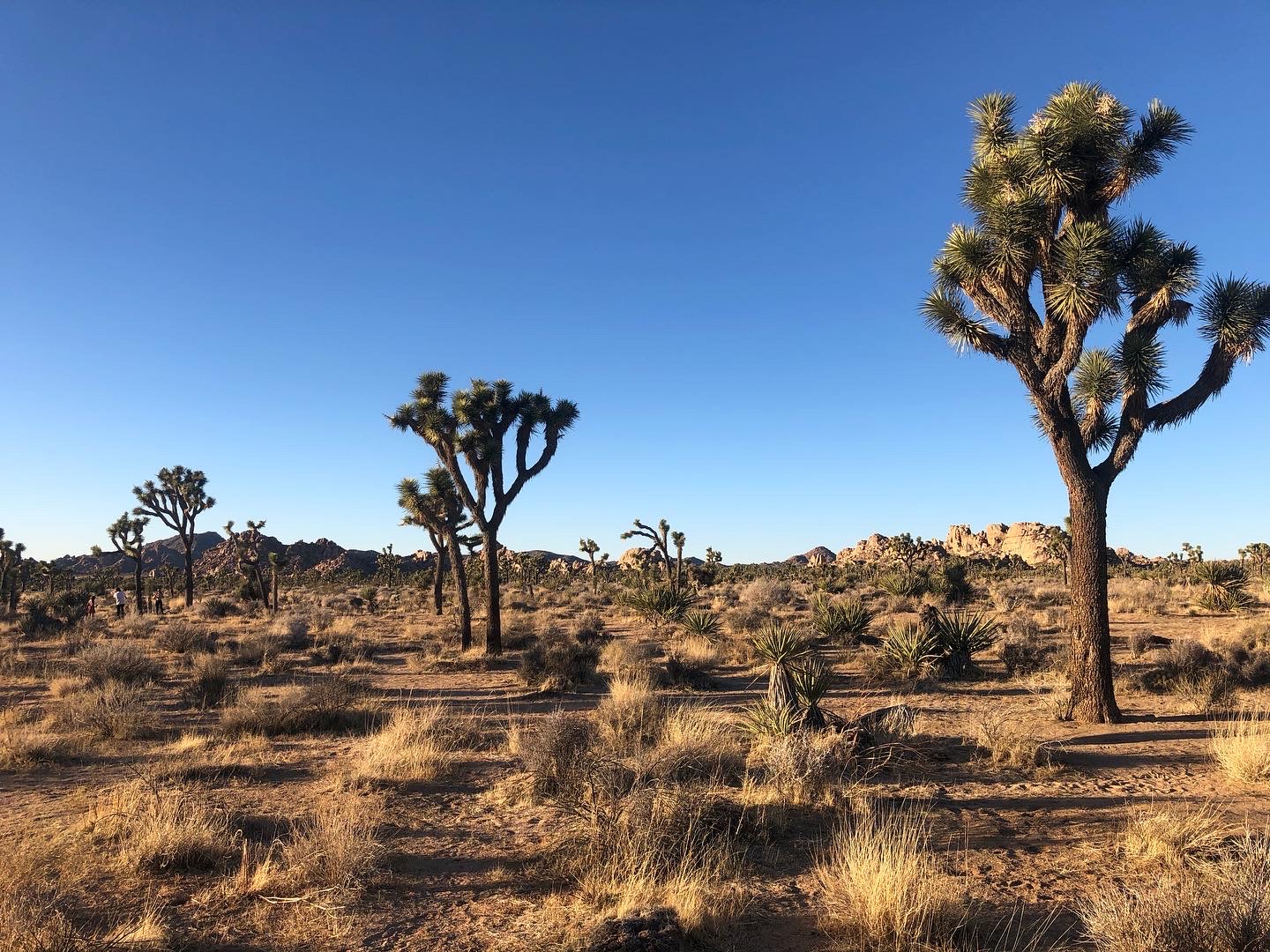Hello! We have had a very busy past few weeks – moving the Joshua tree seedlings to the shadehouse to “harden off,” assessing the plants, planning which garden each seedling would go to, watering the soil in the gardens ahead of time so digging would be easier, organizing/packing up the Joshua tree crates, then finally planting in the gardens. It’s been a multi-step process, with a lot of help. The team consisted of the two CBG interns (Maddy and I), the three USGS mentors/researchers (Lesley, Todd, and Sara), other technicians (Caitlin, Sharon, Alex, and Robin), and university folk (Chris Smith, Karolina Heyduk, Jeremy Yoder, and Jeremy’s graduate student, Kate).
After much consideration between the investigators on this project, it was decided that we were going to split up the majority of plants between Cactus Mine and Ridgecrest, then plant a small subset in the Utah garden. The Utah garden is already so successful that it wouldn’t make much sense to plant populations that we already knew were physiologically adapted there – there is also less room to plant there since there are still so many live plants. We had originally planned to plant across these three gardens over the span of two weeks, spending two days at Cactus, three days at Ridgecrest (since the drive is so long), and then two days at Utah. However, the team was so efficient that we got it all done within five days!
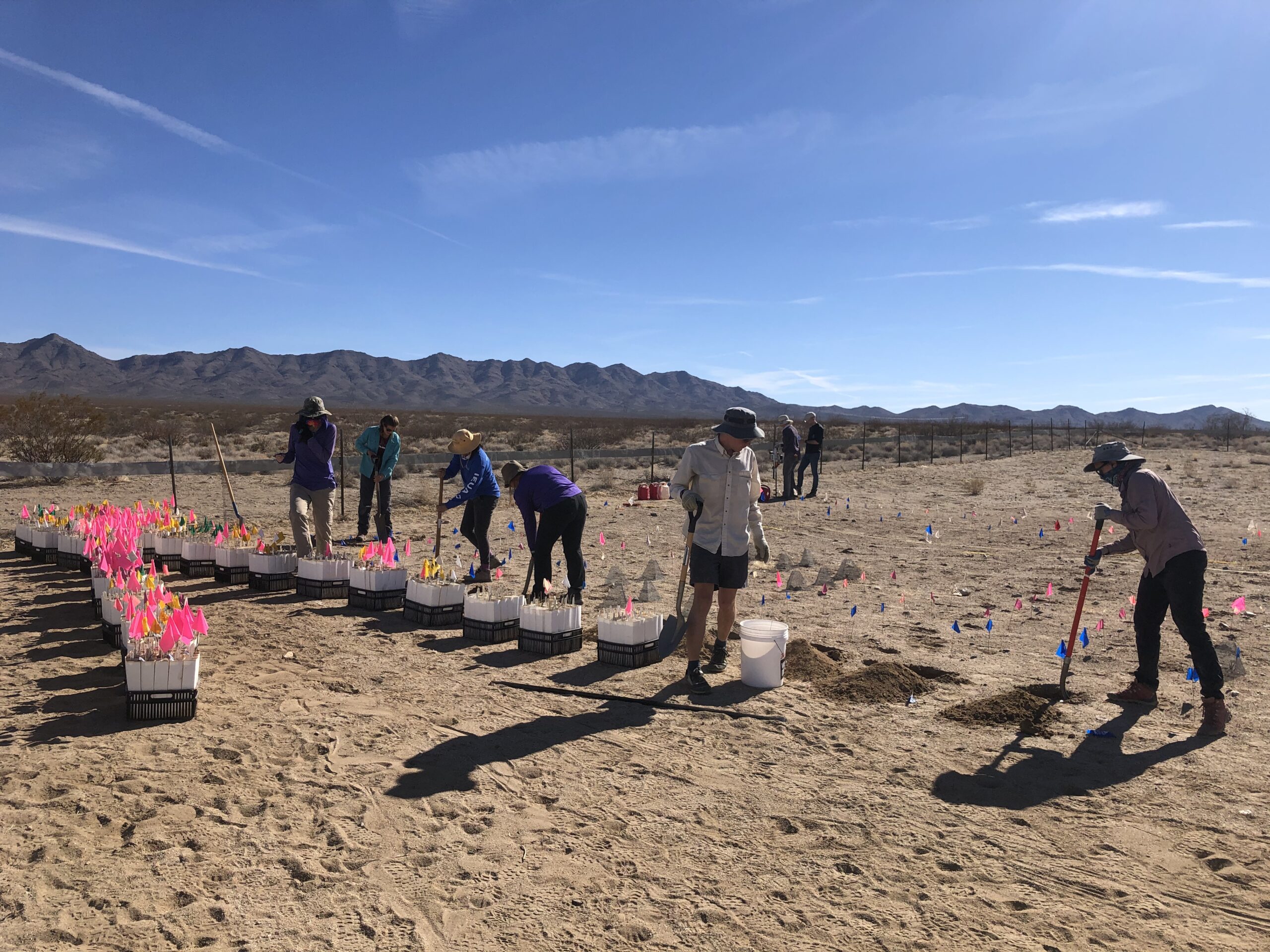
We started off with the Cactus Mine garden, which is the garden closest to Boulder City and also the garden that gets the most public visitation. We loaded the crates containing plants designated for Cactus into a U-Haul, then made the trek to the garden. Upon arrival, we started to dig – both with an auger and with shovels, since the auger was acting a little finicky. We had to let the digging team get a little ahead of the planting team, since digging took longer on average and, though the auger eventually started working consistently, it was hard work and required breaks. Once there were enough holes prepared to start planting, we received a short orientation on how to plant (“Green side up!” was a funny tag-line we heard). The process went like this
- The plant band (containing the Joshua tree) would be placed in the hole, but the planter would need to make sure the soil surface around the hole matched the height of soil in the plant band. If it didn’t match, the planter would either remove more soil from the hole or add soil
- The planter would pack some soil into the hole around the plant band (adding water to the soil as needed), then wiggle the plant band a bit to make the plant band rise out of the soil, but the Joshua tree/soil within the plant band would stay in place
- The planter would pack more soil around the plant band and wiggle the plant band some more, continuing to pull the plant band further out of the hole while the Joshua tree stayed in place. We repeated the packing/wiggling process about 3-4 times per hole, until the plant band could be completely removed and the Joshua tree was stable in the hole
- We would organize the contents around the Joshua tree – making sure the metal tag denoting its number was still around the plant and not crushing any blades, moving the plastic tag denoting its matriline further from the plant so it was easier to read, and removing the bamboo stick that was used to keep the metal tag around the plant
- We would water the plant and move on to the next one! If the water flowed quickly away from the plant and into surrounding soil (usually because of a discrepancy with the incline), we would pack soil into a donut shape around the plant to ensure that water would pool around it. Or if water quickly ‘glugged’ into the soil, it meant that we hadn’t packed the soil correctly while planting and there was an air bubble somewhere in the soil – in cases like that there wasn’t much we could do to fix it retroactively, but we would pack some more soil into the depression near the plant
The process started to move quickly once we got the hang of it. As Cactus was the first garden, though, we had to do the most organization when it came to pulling plant bands out of the crates. Since each plant within a crate was designated for a specific garden, sometimes a crate could contain plants going to Cactus, Ridgecrest, and Utah. We would have to bring that whole crate to Cactus, then pull out plants designated for either Ridgecrest or Utah and move them into a separate crate. So once organized, we actually had an easier time moving crates to Ridgecrest and Utah, since the crates were then sorted into almost exclusively plants going to those two gardens.
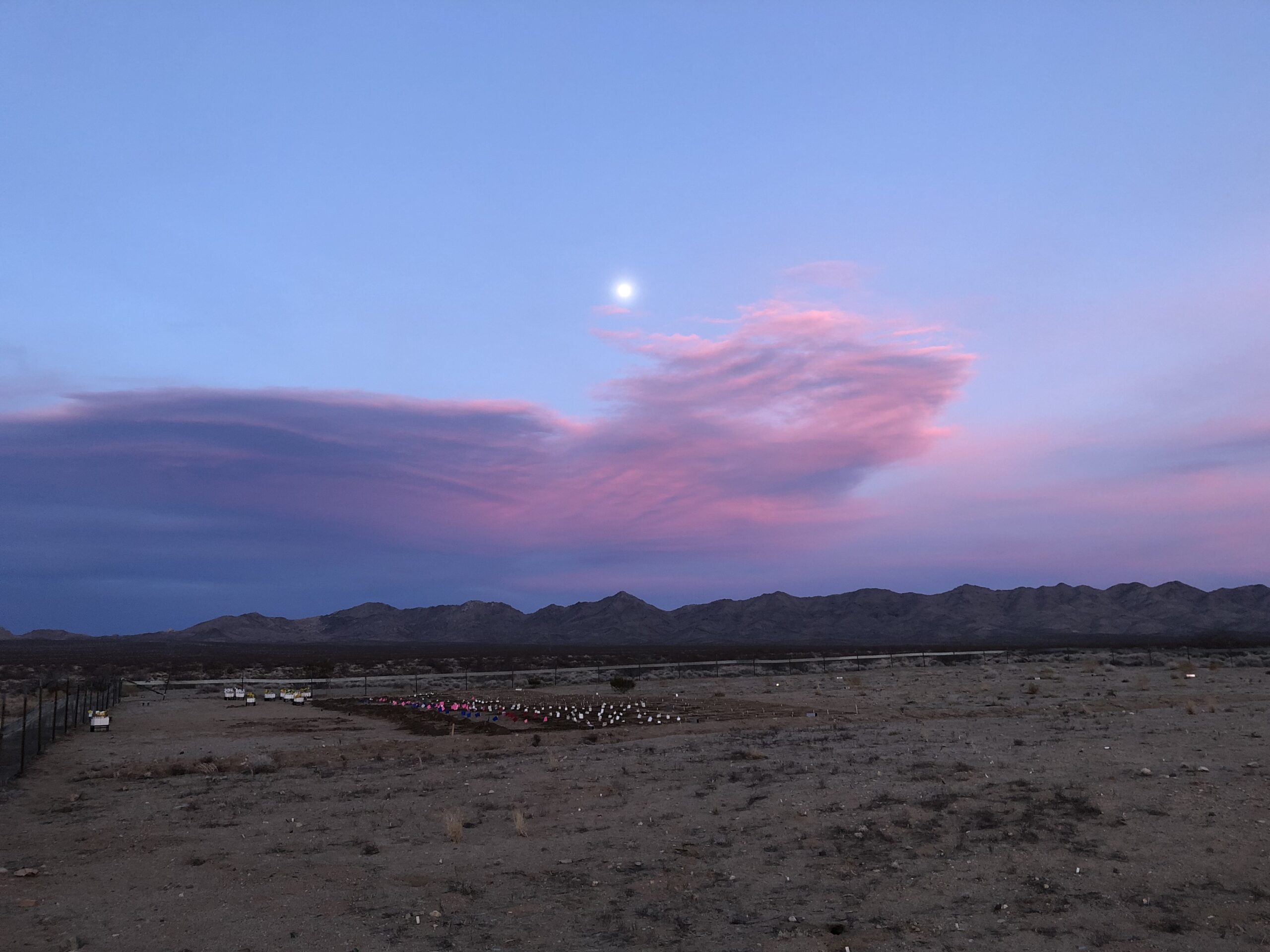
We finished planting in Cactus on Tuesday afternoon, and Lesley and Alex walked through the rows of plants and recorded the tag numbers of each plant to make a garden map. Afterwards, Maddy and I used the fireman’s hose and 500 gallon water tank to water the whole garden! It felt great to be done with one garden, and we still had time in the day to drive back to the greenhouse, load up all the crates going to Ridgecrest, and pack up the necessary equipment for the next few days. Lesley and Karolina were going to drive straight to Ridgecrest that night to get a head start on drilling holes, while the rest of us were going to start our drive to Ridgecrest early on Wednesday morning.
We arrived to Ridgecrest around 11am, and were psyched to see how many holes they had drilled ahead of time! It made it so easy for us to jump immediately into planting, and since we were a well-oiled machine by that point, we planted super fast. Near 3pm, we were all afraid to ask the inevitable question of “are we gonna finish it all today?” for fear of jinxing it. And thankfully we didn’t jinx it! We finished planting around 5pm, then watered the plants, set some rodent traps for the night, and set up camp. The next morning after checking traps, Maddy, Alex, Karolina, and I worked on mapping the garden (two teams of two working from either end of the garden) while Lesley and Sara filled the 500 gallon tank so we could water the plants again.
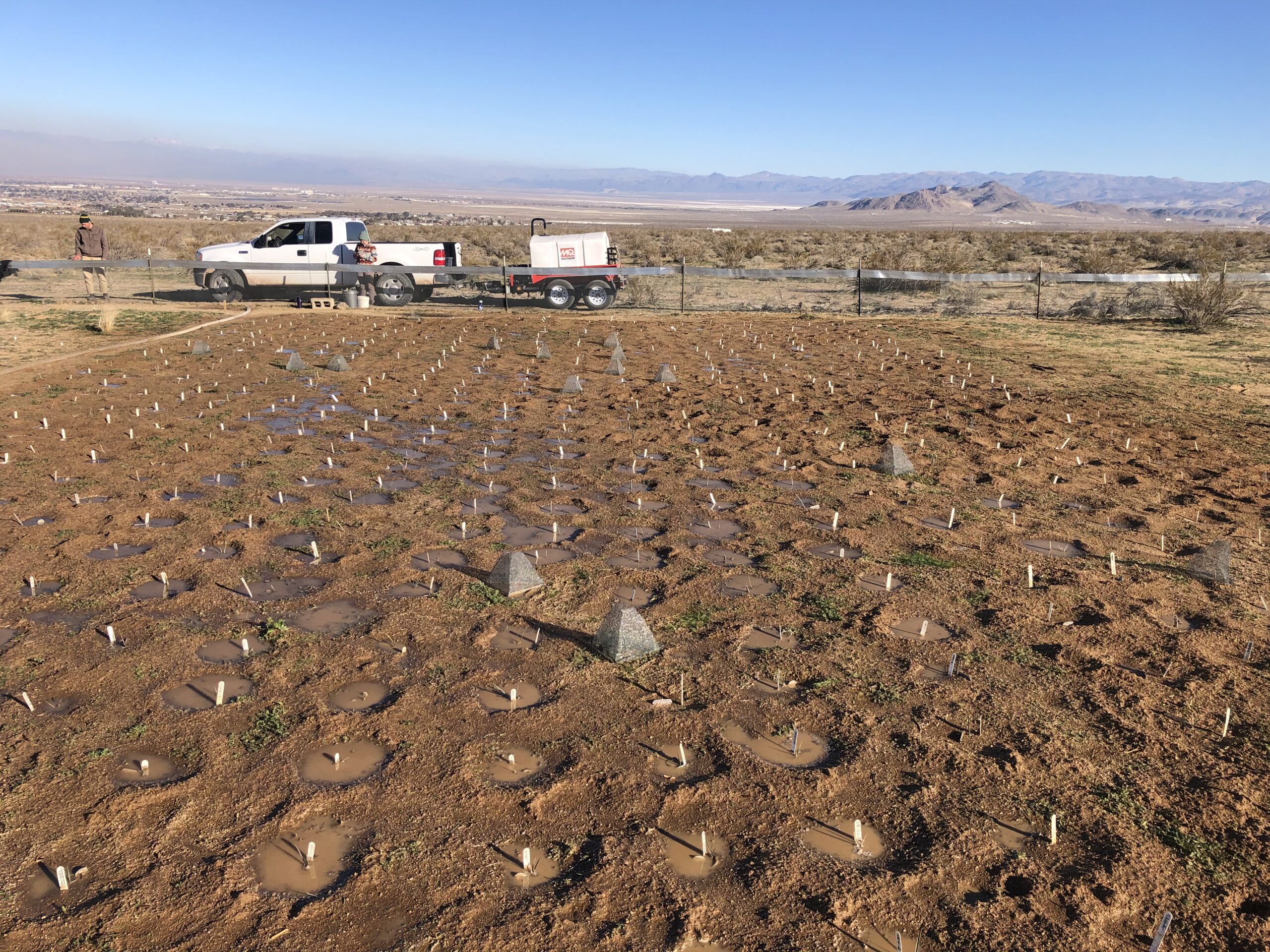
We left around 9am on Thursday to head back to the greenhouse to unload and re-pack for Utah, as Maddy and I planned to drive from the greenhouse to Utah (along with Lesley and Karolina) so we could get a head start on digging for the planting effort on Friday. As luck would have it, though, the route to the garden was blocked in multiple areas by Salsola (also known as Russian thistle or tumbleweed)! Maddy and I used pitchforks to clear the road, but each time we would clear one and drive a little further, another Salsola roadblock would be in the way. It was pretty comical, but it definitely confused us on our location, and we ended up missing the garden and having to turn around, find the right road, and then clear that road of Salsola as well. We eventually made it to the garden, tired but triumphant in our Salsola fight, to set up rodent traps and head to bed.
On Friday morning, after removing some Salsola inside the garden and making a plot for the new plants, Maddy and I volunteered to be the digging team. We had a quick lesson on how to use the auger, but learned that usually the Utah garden needs to be dug by hand because the soil is too dense. We started to dig, but the auger would turn off about halfway down the hole because it would get stuck. This was pretty frustrating, especially since digging by hand would take very long, but we couldn’t see any way around it. We dug about sixty holes to half depth, but on the third row we finally figured out a process to be able to auger to the full depth needed to plant the Joshua trees. It took a lot of time, muscle, water, and gas to dig to the correct depth, but it was definitely worth it as it helped us save energy and time. Maddy and I dug the holes, while Caitlin, Sharon, Alex, and Robin planted, Sara unloaded crates, and Lesley, Todd, and Karolina removed Salsola. We eventually finished with planting around 1:30pm, and after taking a quick lunch, mapped the garden layout and watered the garden.
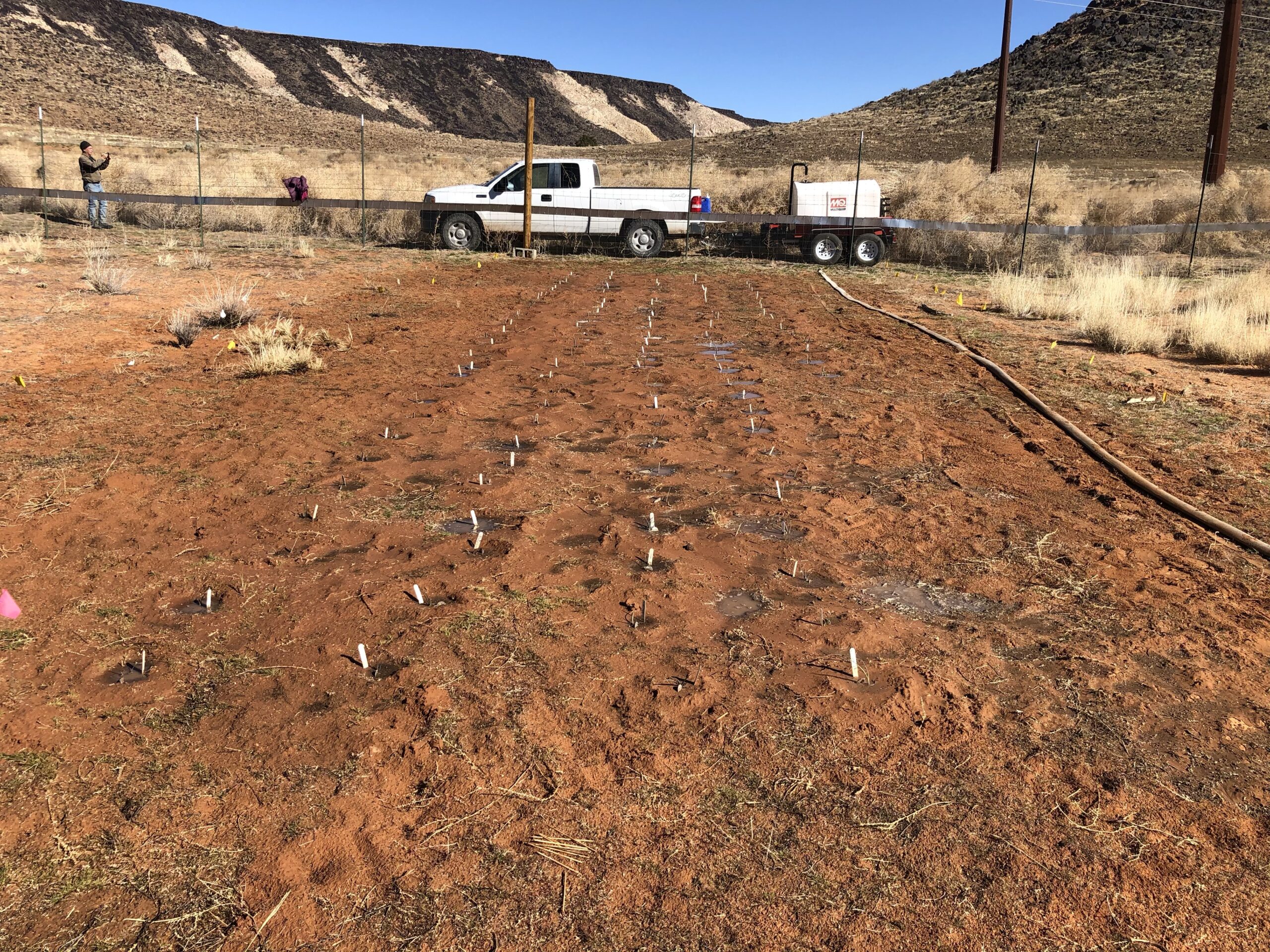
We then joined the Salsola removal team, which had made a huge headway. Before this day, the interior of the garden was pretty overrun with Salsola, and we never had enough time to make a dent in removal. With everyone’s help we finally cleared the garden of the Russian thistle! After throwing it over the high fence, we had to clear the outside fence line as well, before finally packing up and leaving. I still can’t believe we were able to finish all the planting in only one week. It definitely couldn’t have been done without the help of everyone on the team, and we were all very thankful to be treated to smoothies afterwards!
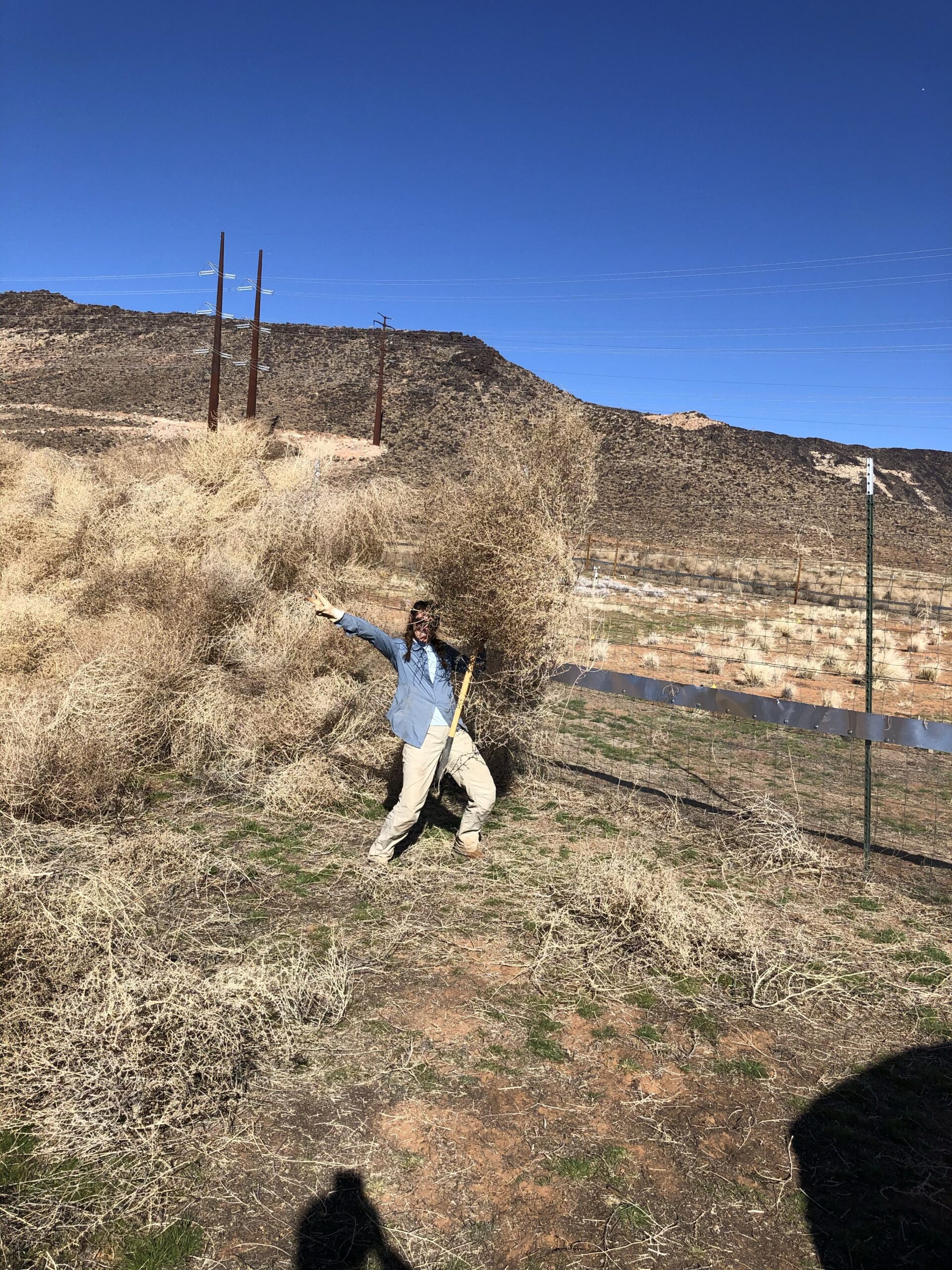
Unfortunately, when we visited the Utah garden only 4 days later to assess the older population of Joshua trees, we found that a lot of the newer Joshua trees had already been damaged by rodent herbivory. It was very sad to see, especially because these plants would most likely survive here if not for the biting rodents. We had to cover all of the plants with a mesh cage (secured by landscaping pins at the bottom and by a zip tie at the top) to try to minimize any further damage, but we are nervous about the plants that have already been chewed. Lesley mentioned that if the meristem, which is where new growth is occurring, is chewed, then the plant will likely die. We are crossing our fingers that some of the new plantings survive this!
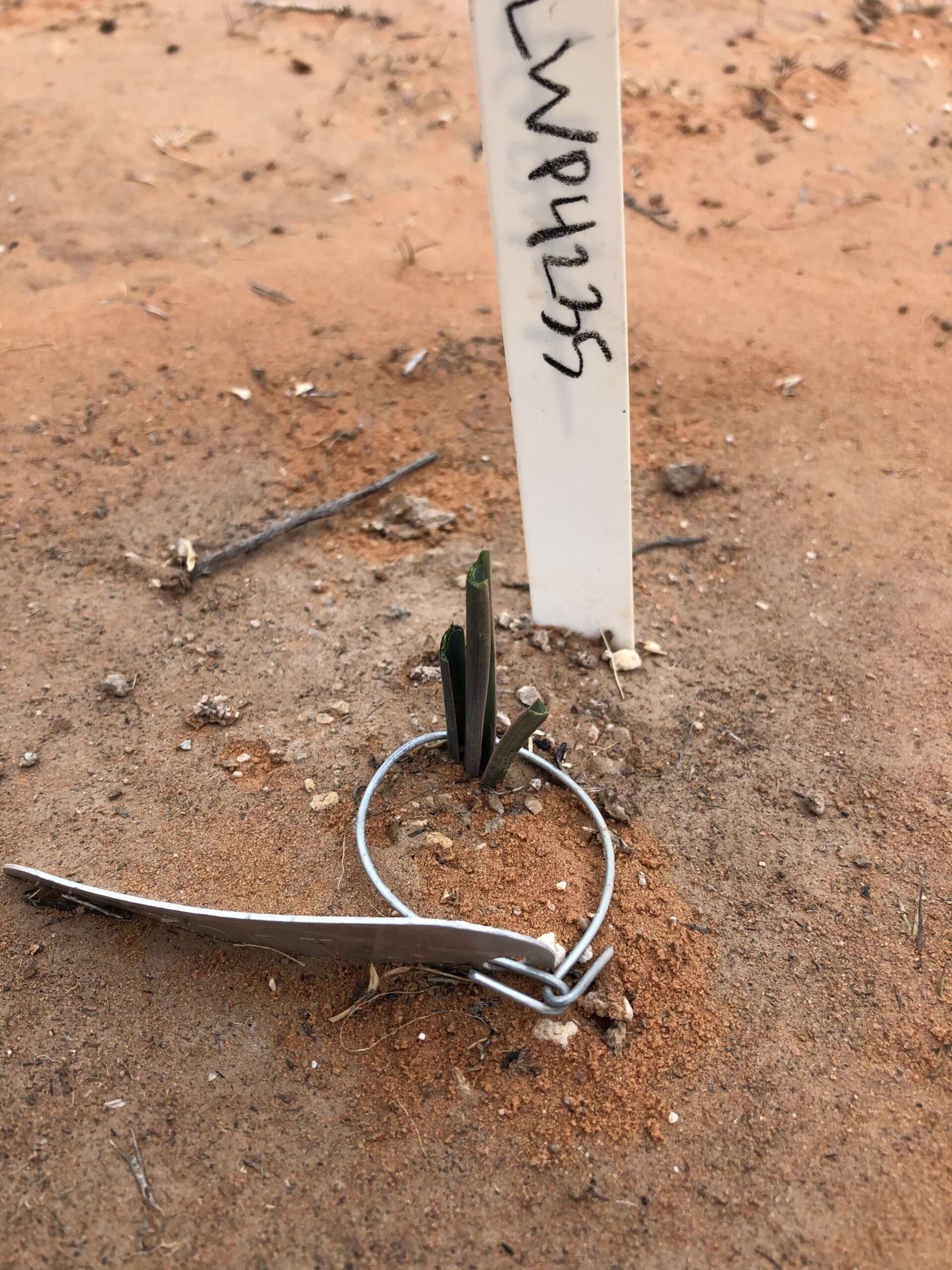
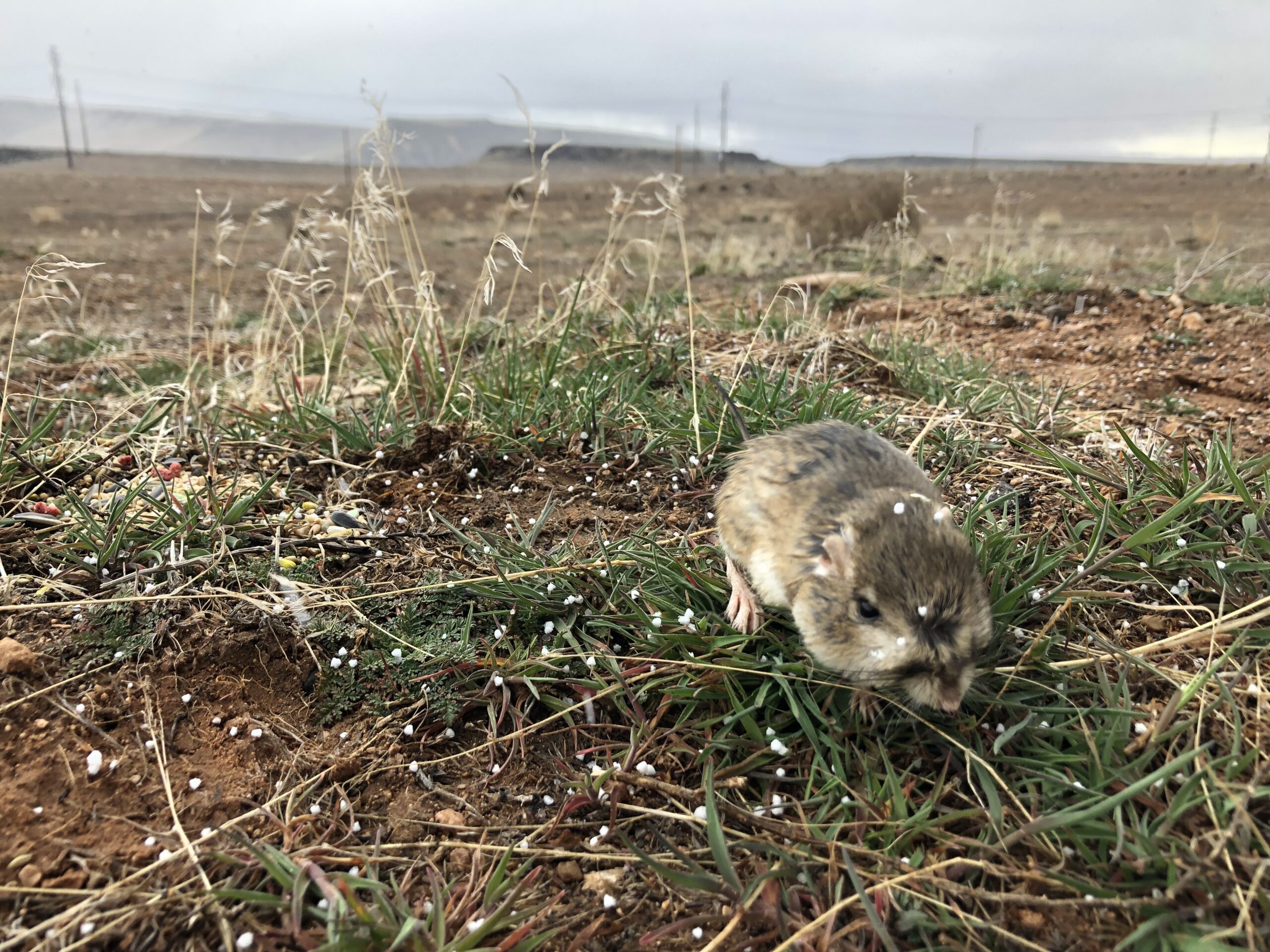
After a few high-energy weeks to get this planting effort prepared and finished, it has been nice to relax a little! Maddy and I recently visited Joshua Tree National Park for the first time (so cool to see so many fully grown Joshua trees), and have still been hiking every weekend around the Las Vegas/Boulder City area. The weather is definitely starting to warm up, so I am excited to be able to swim soon!
